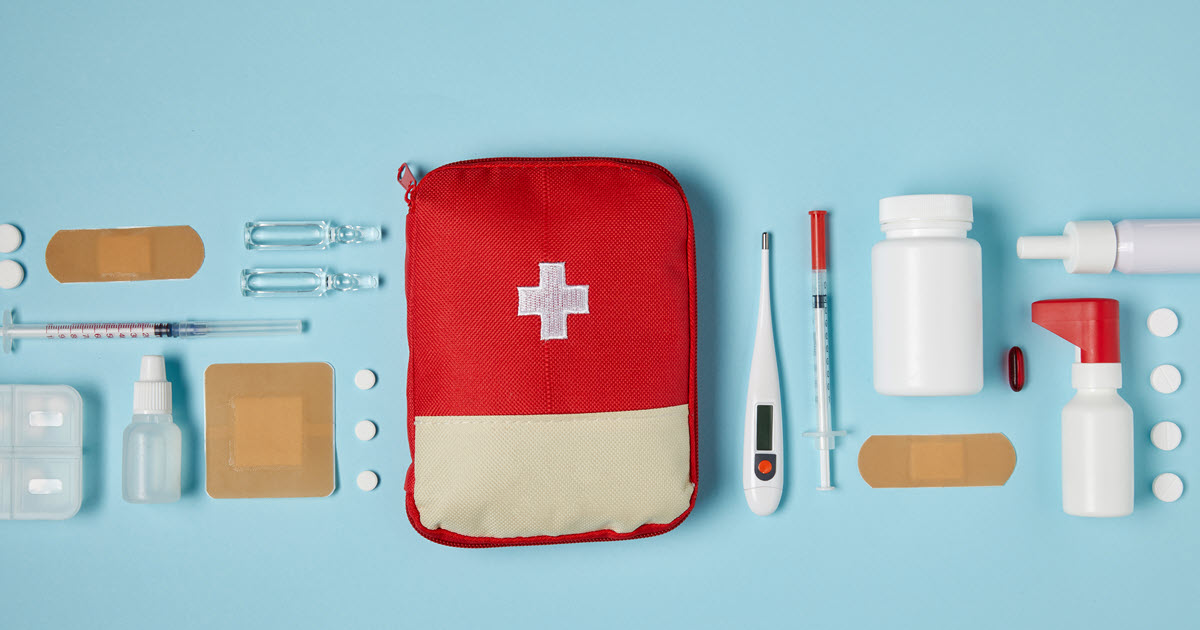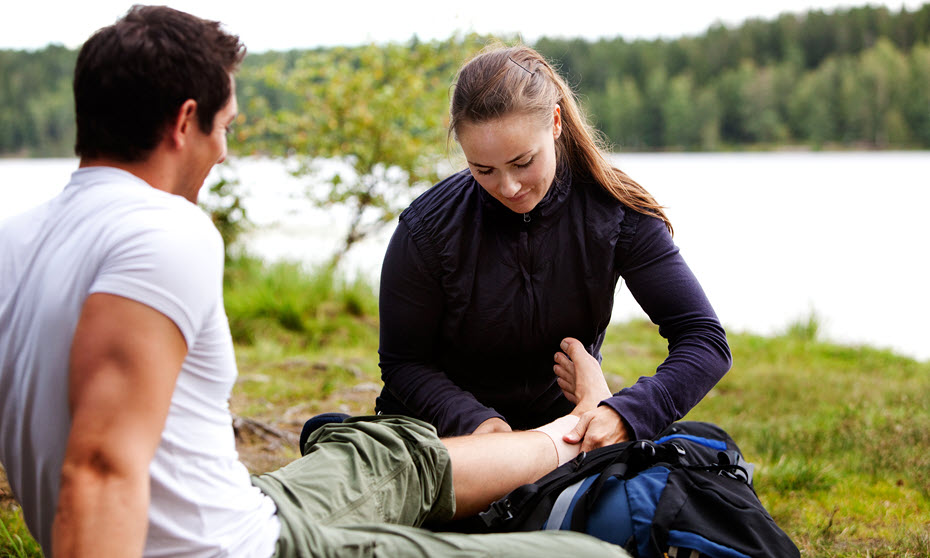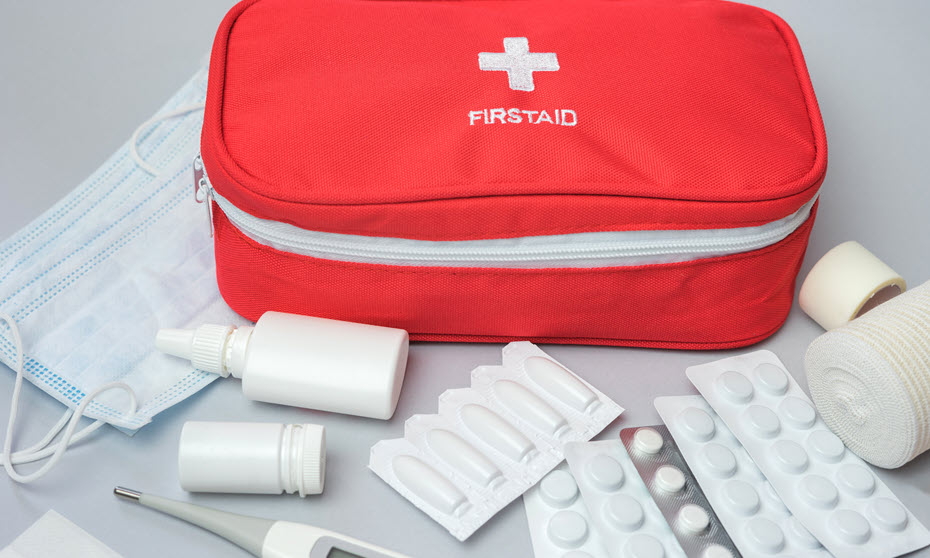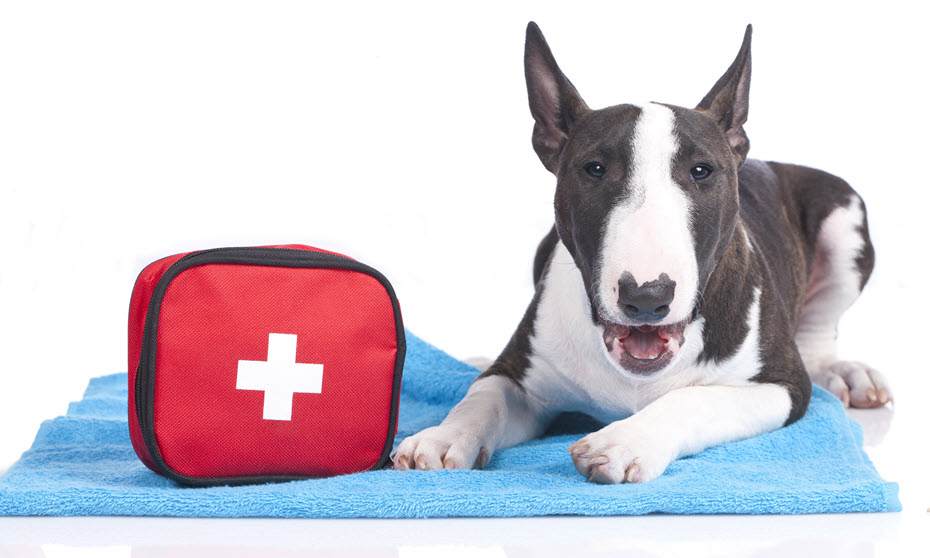
While travelling across Western Australia is full of fun and adventure, the activities involved can result in accidents and health issues, such as scratches, bruises, cuts, burns, upset stomachs and headaches. Accessing medical care in the course of travel can be challenging in some locations. That’s why it’s a good idea to carry a first aid kit with essential items so you can help others including family, children and pets in need.
If you’re planning to holiday in a remote location, here are the essentials to include in your travel first aid kit.
A first aid manual is one of the most important first aid kit contents. It contains a systematic guide on how to deal with various first aid emergencies.
Ideally, it outlines guidelines to follow to treat minor accidents, sprains, cuts, bites, wounds and other emergency health issues. You and your travel entourage should know and master the contents of the first aid manual before your travel. Make sure you keep an up to date manual in your first aid kit at all times.
St John Ambulance Australia has a great first aid manual. Following the guidelines in the first aid manual whilst waiting for emergency services to arrive can help save a life.

If your travel adventure involves trekking or hiking, you’re likely to develop blisters or get involved in accidents, such as scrapes and cuts due to sliding and falling in rugged terrains. This is where a cotton bandage may come in handy in treating these injuries.
Bandages will help you cover blisters to stop them from getting worse and cover scrapes and cuts to prevent bleeding and infection. They also provide support to dislocated joints and other injuries until the professionals are able to treat them.
So, be sure to include adhesive cotton bandages of various sizes in your travel first aid kit.
Scissors are essential to cut and trim bandages and dressings to fit wounds. They’re a common tool at home so don’t overlook this in your first aid kit.
Tweezers are used to remove dirt, splinters or other debris from a wound before it’s treated. And if you’re camping in a bee-infested area, tweezers can help you remove bee stingers if you're bitten.
Splinter forceps also work well for this purpose and are a great alternative.
Before you apply antibiotic ointment on a wound and cover it with a bandage, you need to clean it first. Alcohol swabs will help you with that.
When you’re not using them for skin swabs, you can also use them to sterilise tweezers. Multipurpose products like alcohol swabs are great for your travel first aid kit.
Medical tape comes in a long roll and is used to secure bandages or dressing pads to a wound. It shouldn't leave residue behind when used.
Your medical tape should be hypoallergenic to prevent it from causing skin infection and to ensure that you can treat a variety of injuries. It should also be waterproof, breathable and consist of a non-irritating adhesive.
Gloves protect the person administering the first aid from infections. It also protects the wounded area from bacteria that can be transmitted by dirty hands when injury cleaning.
Gloves are also used to clean up fluid or blood-spilled surfaces.
You’ll never miss a gauze pad in any first aid kit because it performs multiple functions.
It can be used as an injury dressing pad, used to stop bleeding, keep wounds clean and treat small and medium burns, cuts and scrapes. It’s also used to protect wounded areas from debris, which can cause infections.
You can avoid the hassle of cutting gauze pads to size by including individually wrapped sterile squares in your first aid kit. They can also be used in pressure application.
Definitely a staple in every first aid kit.

When your travel involves camping, you’re more likely to be bitten by insects or bugs.
This could result in rashes or itchy and painful bumps on your skin. While such bug bites are not often harmful, they are annoying and can affect your sleep. Itch cream, better known as Antihistamine cream, can help prevent itching and swelling and help you get a good night's sleep.
It’s normal to sprain your ankle and develop minor aches, pains when hiking or trekking on holiday. You’ll need to carry a pain relief medication along to ease the pain to continue enjoying your adventure.
A pack of the good old paracetamol is enough. Besides helping relieve pain, paracetamol helps bring down any fever you might catch during your escapades.
However, you can also carry along some ibuprofen, which helps ease pain and inflammation. Don’t forget pain relief medication for children in your kits.
Antibiotic ointment is primarily used to rid any wounds of infections caused by bacteria. It also aids in faster healing of the wound. Antibiotic ointment should be applied after the wound has been thoroughly cleaned with running water or saline solution.

The explosion of pet-friendly travel providers means more people are now travelling with their dogs. If you’re planning to travel with your dog, you’ll need to carry along a dog first aid kit too. That’s because your pet might get injured or develop minor health complications during travel or when exploring or playing around.
So, besides the first aid kit checklist above, include the following equipment in your dog first aid kit:
These are used for flushing dog wounds, giving oral or eye area medication to your pet. They are also used for feeding injured or sick pets.
A hurt or wounded dog might become frantic. A muzzle prevents them from biting when they're being examined. However, the muzzle should be adjustable and breathable to ensure the dog is comfortable.
A soft blanket will help you rest and calm your dog when injured. It will also help keep the dog warm after emergency treatment.
Dogs can develop allergic reactions and swelling when they eat certain foods. That’s why you need to carry medication as part of your dog first aid kit when travelling with your dog.
Medications like anti-inflammatories and antihistamines are good examples. Antihistamines help cure immediate allergic reactions. Anti-inflammatories, on the other hand, help minimise swelling.
Please speak to your vet prior to purchasing and administering medication to your dog.
A flashlight is an essential item, especially when your travel involves camping. Your dog may be injured during the night, so you’ll need a flashlight to treat your dog. They’re also helpful in emergencies when there is low visibility. A key staple for any first aid kit.
You can include more items on this first aid kit checklist, depending on your travel and destination needs.
For example, a camping first aid kit will be different from a city tour first aid kit. It’s also important to note that the contents might be different to first aid kits at workplaces or at your home. If you’re using your own means of transport, it's always a good idea to pack an additional car first aid kit, separate from your caravan/camper trailer. For a full list of items you should pack, check out our list of road trip essentials.
Why do I need a first aid kit when travelling across Western Australia?
While travelling in Western Australia can be full of fun and adventure, there are potential health issues that can arise, such as scratches, bruises, cuts, burns, upset stomachs, and headaches. Accessing medical care in remote locations can be challenging, which is why it's a good idea to carry a first aid kit with essential items. It will allow you to help yourself, your family, children, and even pets in need.
What should I include in my travel first aid kit?
A first aid manual, bandages of various sizes, small scissors, tweezers, alcohol swabs, medical tape, disposable gloves, and gauze pads are essential items that should be included in your travel first aid kit. You should also include medications such as pain relief, antihistamine cream, and antibiotic ointment. If you're travelling with your dog, you'll need to include additional items such as non-toxic syringes, a soft dog muzzle cover, a soft blanket or towel, and dog medication.
Can I modify the contents of my first aid kit depending on my travel destination?
Yes, it's recommended that you modify the contents of your first aid kit depending on your travel destination and needs. For example, a camping first aid kit may require additional items such as insect repellent, while a city tour first aid kit may not require them. Additionally, the contents of your first aid kit may vary depending on your mode of transportation. If you're using your own means of transport, it's always a good idea to pack an additional car first aid kit, separate from your caravan/camper trailer.